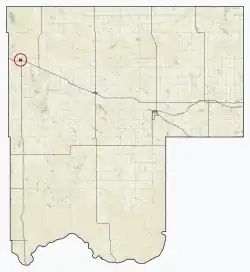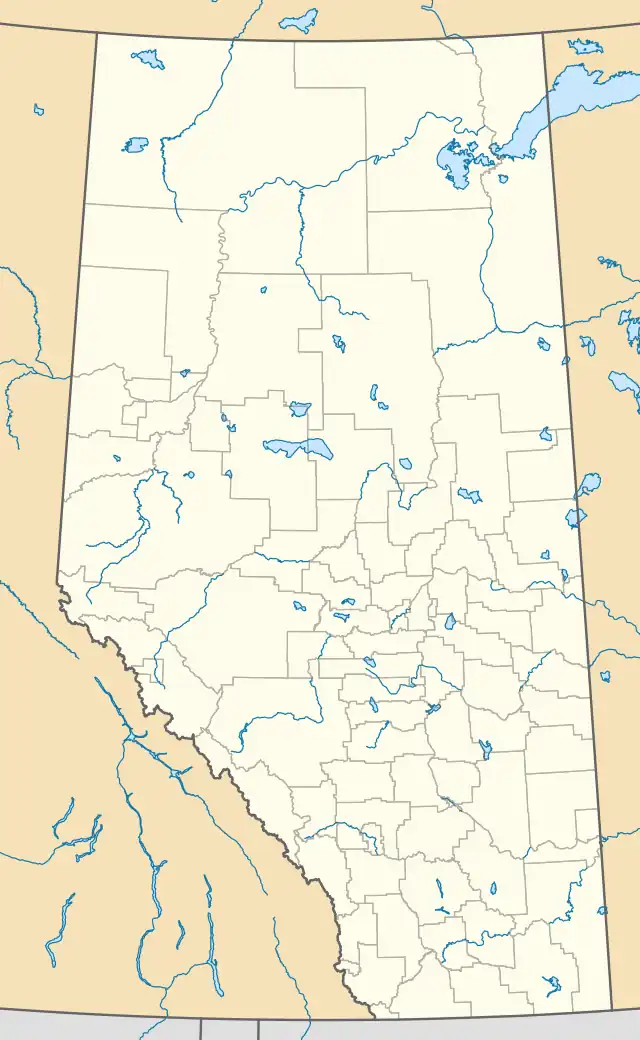Youngstown | |
|---|---|
| Village of Youngstown | |
 | |
| Nickname: Sportsman's Paradise | |
 Location in Special Area No. 3 | |
 Youngstown | |
| Coordinates: 51°31′29″N 111°11′55″W / 51.52472°N 111.19861°W | |
| Country | Canada |
| Province | Alberta |
| Region | Southern Alberta |
| Census division | 4 |
| Special Area | No. 3 |
| Incorporated[1] | |
| • Village | March 8, 1913 |
| • Town | November 15, 1921 |
| • Village | December 31, 1936 |
| Government | |
| • Mayor | Robert Blagen |
| • Governing body | Youngstown Village Council |
| Area (2021)[2] | |
| • Land | 1.11 km2 (0.43 sq mi) |
| Elevation | 780 m (2,560 ft) |
| Population (2021)[2] | |
| • Total | 171 |
| • Density | 154.7/km2 (401/sq mi) |
| Time zone | UTC−7 (MST) |
| • Summer (DST) | UTC−6 (MDT) |
| Highways | Highway 9 Highway 884 |
| Waterways | Sounding Creek |
| Website | youngstown |
Youngstown is a village in southern Alberta, Canada within Special Area No. 3. The village refers to itself as a Sportsman's Paradise due to plenty of wild game and trout fishing in the area.
Demographics
In the 2021 Census of Population conducted by Statistics Canada, the Village of Youngstown had a population of 171 living in 77 of its 95 total private dwellings, a change of 11% from its 2016 population of 154. With a land area of 1.11 km2 (0.43 sq mi), it had a population density of 154.1/km2 (399.0/sq mi) in 2021.[2]
In the 2016 Census of Population conducted by Statistics Canada, the Village of Youngstown recorded a population of 154 living in 68 of its 88 total private dwellings, a -13.5% change from its 2011 population of 178. With a land area of 1.11 km2 (0.43 sq mi), it had a population density of 138.7/km2 (359.3/sq mi) in 2016.[3]
See also
References
- ↑ "Location and History Profile: Village of Youngstown" (PDF). Alberta Municipal Affairs. October 21, 2016. p. 625. Retrieved October 23, 2016.
- 1 2 3 "Population and dwelling counts: Canada, provinces and territories, and census subdivisions (municipalities)". Statistics Canada. February 9, 2022. Retrieved February 9, 2022.
- ↑ "Population and dwelling counts, for Canada, provinces and territories, and census subdivisions (municipalities), 2016 and 2011 censuses – 100% data (Alberta)". Statistics Canada. February 8, 2017. Retrieved February 8, 2017.